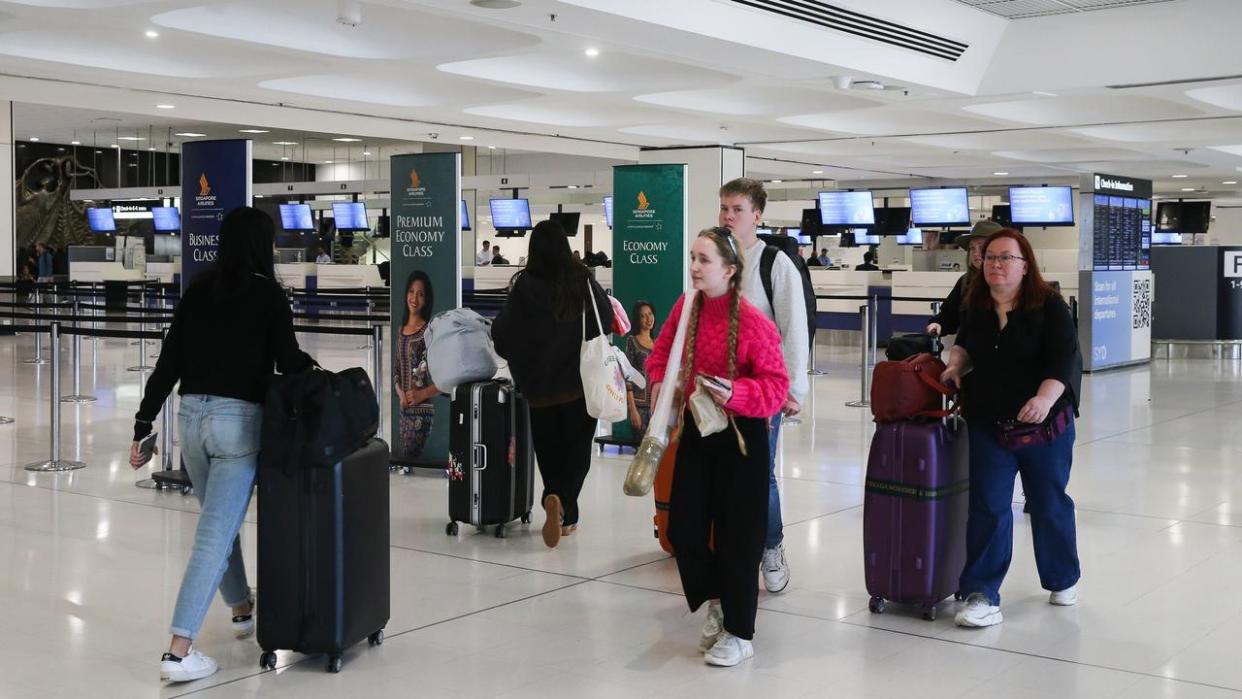Payout injured passengers could receive

Passengers who sustained injuries in the horror Singapore Airlines flight could be eligible for over $100,000 in compensation, according to lawyers.
The deadly Singapore Airlines Flight SQ321, which had been bound for Singapore from London, hit severe turbulence over Myanmar and forced the plane to make an emergency landing in Bangkok on Tuesday night (AEST).
Out of its 211 passengers and 18 crew members aboard, 80 people were left injured, 20 left in intensive care and a 73-year-old man sadly lost his life.
The British man’s exact cause of death has yet to be confirmed, but Thai authorities have suggested it may have been due to a heart attack.
Up to 12 Australians are in hospitals in Bangkok following the incident, including three in critical care.

Lawyers across several firms have spoken to various media outlets and have said passengers who were injured could claim compensation, even if the airline is found to not have been negligent.
“Passengers would at the very least be entitled to $250,000 if they have suffered injuries, and these injuries will be determined by looking at their losses,” Senior Councel Sara Kaurin from Arnold Thomas and Becker lawyers told A Current Affair.
“(This will depend on) what treatment expenses they’ve incurred – if they had time off work, how much time they’ve had off work, and generally the impact the accident has had on them.”
Newswire understands that the firm have begun their own investigations into the incident as they are representing a number of passengers.
“It is clear to us, given the nature of the injuries of the passengers that we are representing that they have strong and substantial cases,” Ms Kaurin said.
This is backed up by the universal treaty Montral Convention (MC), which holds airlines accountable for injuries or damages occurred either en route or due to delayed or cancelled flight, and if luggage is lost or damaged.
According to the MC, if a passenger can prove that money was lost because of something the airline did, such as lost luggage or delayed flight, you have the right to claim compensation.
The MC doesn’t specify an exact amount of compensation for delayed or cancelled flights, but airlines are held on strict liability and cannot contest damages up to $150,000.
The flight carried passengers from multiple parts of the world, so passengers affected should check whether their country abides by the MC.
It currently has over 135 countries and territories that follows it, with Australia being one of them. Other countries include Nepal, Denmark, the UK, the US, New Zealand and Sudan.
What happened?
The plane was close to Thailand’s border when the scary incident occured.
During the flight’s meal service the plane suddenly dropped 6000 feet and sent passengers smashing into the ceiling.
One Melbourne woman spoke to Sky News and described how she was “woken up” and was “flung to the roof”.
“(I) was woken up because I was thrown to the roof and then to the floor,” she said, who was admitted to Bangkok’s Samitivej Hospital with her left arm in a sling.
“It was just so quick, over in a couple of seconds and then you’re just shocked.”
Turbulence usually occurs in cloud and is often fairly mild, but can grow more severe in larger clouds such as cumulonimbus thunderstorm cloud.
There is another type of turbulence called “clear air” turbulence, a Trojan horse-style occurence and is difficult to detect and can cause sudden emergencies.
One aviation consultant and former aircraft accident investigator, Tim Atkinson told the BBC that the plane’s size was “very significant” in the incident.
“Small aircraft are more susceptible to severe turbulence and encounters resulting in injuries or indeed death,” he said.
He also pointed out that turbulence was growing more common and severe due to climate change, and that the flight “encountered atmospheric turbulence”.
“Despite abundant caution occasionally, there’s turbulence ahead which can’t be identified, and the unfortunate result of an encounter is injury and, very rarely, fatality,” he said.
Newswire has reached out to Singapore Airlines for comment.


